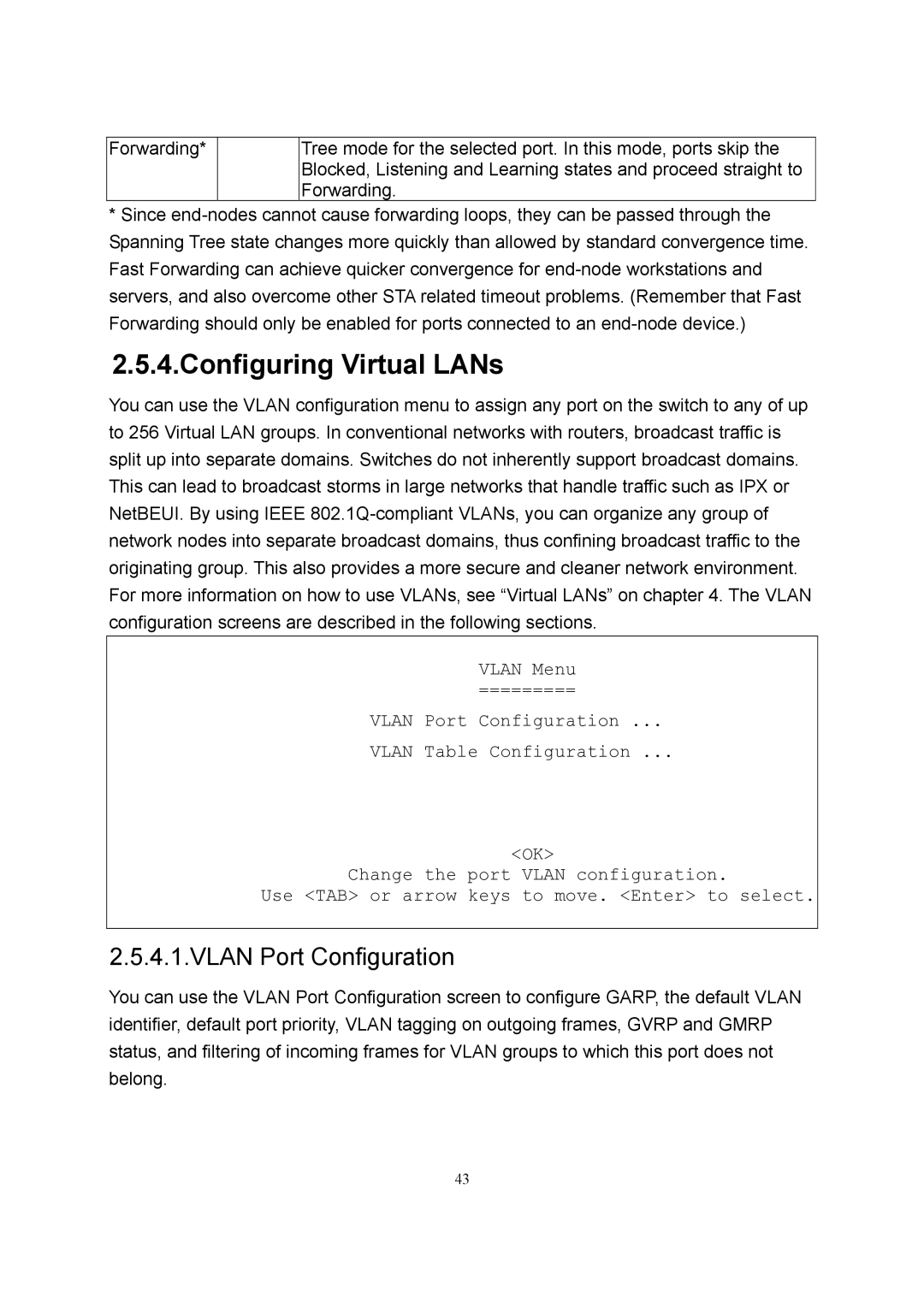
Forwarding* |
| Tree mode for the selected port. In this mode, ports skip the |
|
| Blocked, Listening and Learning states and proceed straight to |
|
| Forwarding. |
*Since
2.5.4.Configuring Virtual LANs
You can use the VLAN configuration menu to assign any port on the switch to any of up to 256 Virtual LAN groups. In conventional networks with routers, broadcast traffic is split up into separate domains. Switches do not inherently support broadcast domains. This can lead to broadcast storms in large networks that handle traffic such as IPX or NetBEUI. By using IEEE
VLAN Menu
=========
VLAN Port Configuration ...
VLAN Table Configuration ...
<OK>
Change the port VLAN configuration.
Use <TAB> or arrow keys to move. <Enter> to select.
2.5.4.1.VLAN Port Configuration
You can use the VLAN Port Configuration screen to configure GARP, the default VLAN identifier, default port priority, VLAN tagging on outgoing frames, GVRP and GMRP status, and filtering of incoming frames for VLAN groups to which this port does not belong.
43
